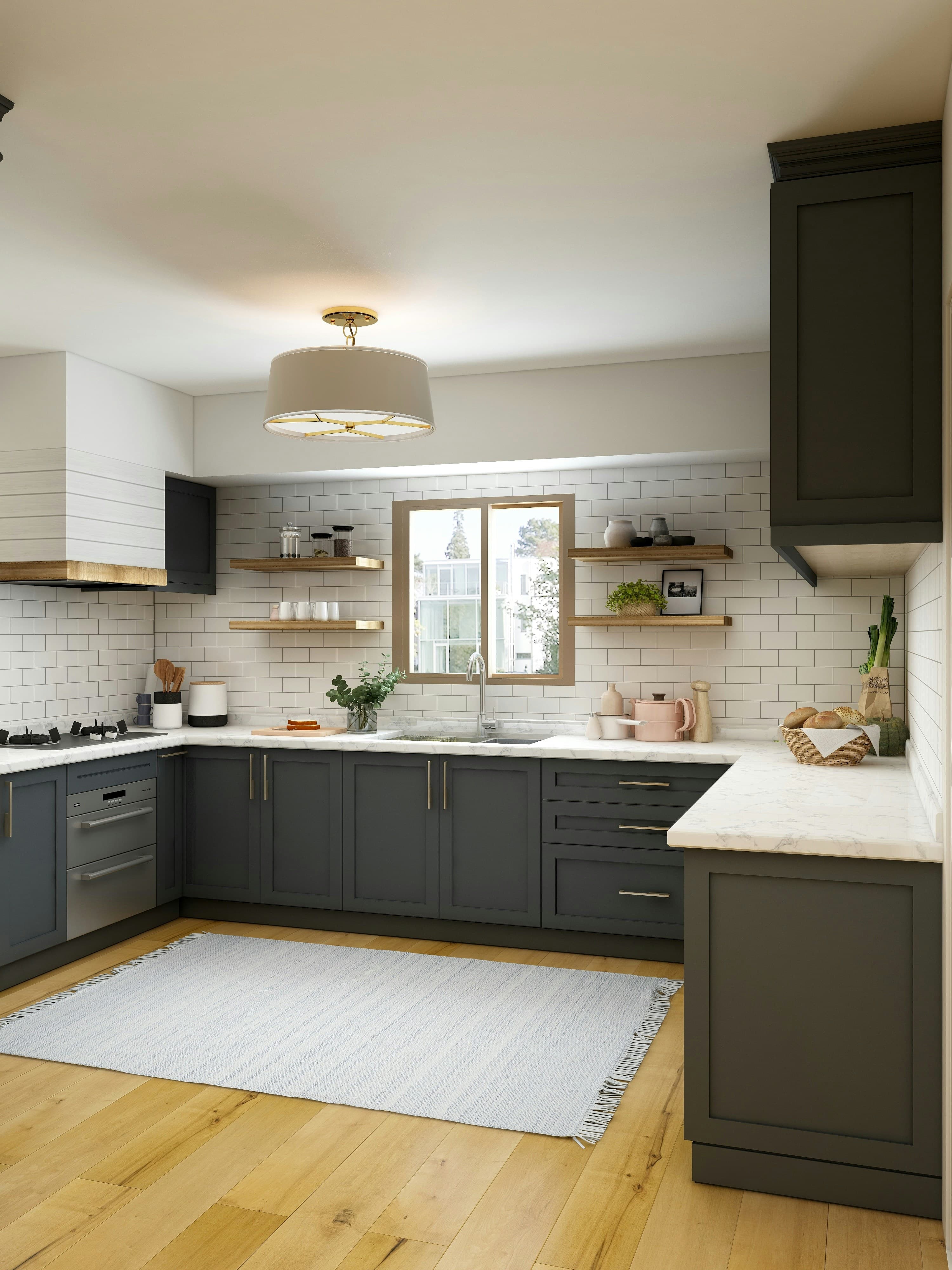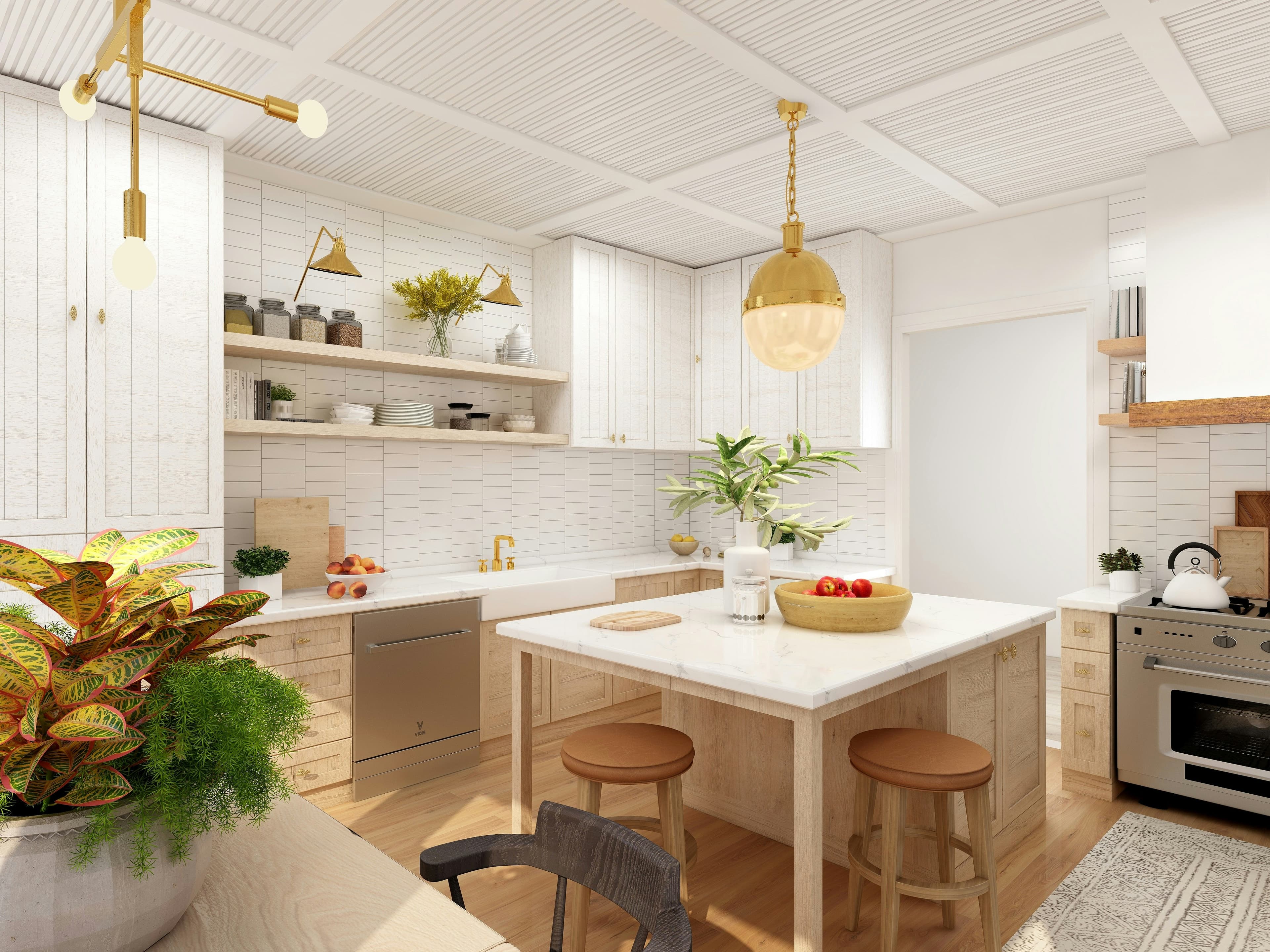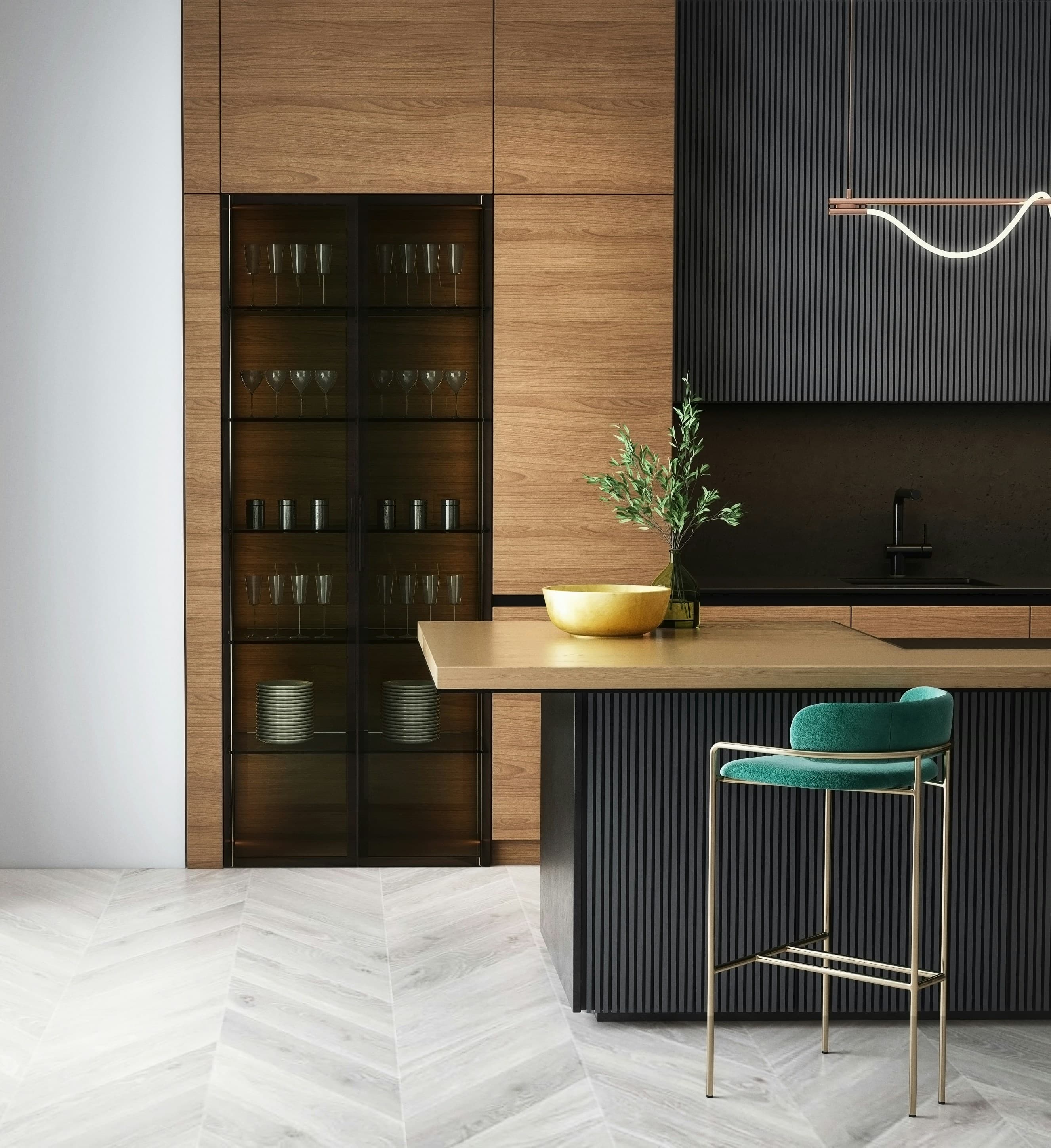
The Science of Kitchen Layout Design
Creating an optimal kitchen layout is both an art and a science, requiring careful consideration of workflow, ergonomics, and spatial relationships. Just as UX research methods help us understand user behavior in digital products, kitchen layout optimization involves studying how people actually use their cooking spaces to create designs that enhance efficiency and enjoyment.
Studios like Studio PFA demonstrate how thoughtful spatial planning and modern technology can be woven together to create high-functioning, visually refined kitchens—balancing practical needs with architectural precision.
Understanding the Kitchen Triangle
The kitchen triangle—connecting the sink, stove, and refrigerator—remains the foundation of efficient kitchen design. This principle, much like design systems in digital products, provides a framework that can be adapted to different spaces and needs while maintaining core functionality. Understanding these fundamental principles is essential for implementing modern kitchen design trends that prioritize both aesthetics and efficiency.
Triangle Principles:
- Optimal distances: Each point should be 4-9 feet apart
- No obstructions: Clear pathways between the three work zones
- Efficient flow: Minimizing steps during food preparation
- Flexibility: Adapting the triangle to different kitchen shapes and sizes
Triangle Variations:
- L-shaped kitchens: Natural triangle formation with good workflow
- U-shaped kitchens: Multiple work zones with excellent efficiency
- Galley kitchens: Linear workflow ideal for smaller spaces
- Island kitchens: Extended triangle with additional prep space
Work Zone Planning
Modern kitchen design goes beyond the triangle to incorporate multiple work zones, each serving specific functions. This approach mirrors the collaboration tools used in design teams, where different areas serve different purposes while working together harmoniously.
Primary Work Zones:
- Prep zone: Food preparation and cutting areas
- Cooking zone: Stove, oven, and cooking equipment
- Cleanup zone: Sink, dishwasher, and waste disposal
- Storage zone: Pantry, refrigerator, and dry storage
- Serving zone: Plating, serving, and dining areas
Zone Optimization:
- Logical flow: Zones should follow the natural cooking process
- Equipment placement: Tools and appliances within easy reach
- Storage proximity: Items stored near where they're used
- Traffic flow: Minimizing cross-traffic and congestion
Ergonomics and Accessibility
Kitchen design must accommodate users of all abilities and sizes, following the same accessibility principles that guide digital design. This ensures that kitchens are usable and comfortable for everyone who uses them. These considerations are particularly important in sustainable kitchen design, where the focus on human health and well-being extends beyond basic functionality to create truly inclusive spaces.
Ergonomic Considerations:
- Counter heights: Adjustable or varied heights for different users
- Reach distances: Ensuring items are within comfortable reach
- Work surface depth: Adequate space for food preparation
- Seating options: Comfortable seating for various activities
Accessibility Features:
- Universal design: Works for users with different abilities
- Clear pathways: Adequate space for mobility devices
- Easy-to-reach storage: Lower cabinets and pull-out shelves
- Contrast and lighting: Good visibility for all users
Space Planning Strategies
Effective space planning requires understanding how different kitchen activities interact and overlap. This process is similar to mobile design trends, where designers must optimize limited space for maximum functionality and user satisfaction.
Small Kitchen Solutions:
- Vertical storage: Utilizing wall space and tall cabinets
- Multi-functional furniture: Tables that serve multiple purposes
- Hidden storage: Maximizing every available inch
- Smart appliances: Compact, efficient equipment choices
Large Kitchen Opportunities:
- Multiple work zones: Separate areas for different activities
- Entertainment spaces: Areas for socializing and dining
- Specialty areas: Wine storage, coffee stations, or baking centers
- Flexible layouts: Adaptable spaces for different occasions
Traffic Flow and Circulation
Understanding how people move through the kitchen is crucial for creating efficient layouts. This analysis is similar to the user behavior analysis used in digital design, where understanding user patterns leads to better design decisions.
Traffic Flow Principles:
- Clear pathways: Unobstructed routes through the kitchen
- Work zone separation: Keeping traffic away from active work areas
- Multiple access points: Avoiding bottlenecks and congestion
- Natural movement: Following intuitive patterns of use
Circulation Patterns:
- Primary circulation: Main pathways through the kitchen
- Secondary circulation: Access to storage and appliances
- Service circulation: Routes for serving and cleanup
- Social circulation: Spaces for gathering and interaction
Storage and Organization Integration
Storage design must be integrated into the overall layout planning, ensuring that everything has a logical place and is easily accessible. This approach reflects the design system principles of consistency and organization.
Storage Planning:
- Zone-based storage: Items stored near where they're used
- Frequency of use: Most-used items in most accessible locations
- Size and weight: Heavier items in lower, more stable locations
- Visual organization: Clear systems for finding and storing items
Organization Systems:
- Pull-out drawers: Easy access to deep cabinet spaces
- Lazy Susans: Efficient use of corner cabinet space
- Vertical dividers: Organizing baking sheets and cutting boards
- Custom inserts: Tailored solutions for specific items
Lighting and Ventilation Integration
Proper lighting and ventilation are essential components of kitchen layout design, affecting both functionality and user experience. This attention to environmental factors mirrors the sustainable design practices that consider the full user experience.
Lighting Integration:
- Task lighting: Bright, focused light for work areas
- Ambient lighting: General illumination for the overall space
- Natural light: Maximizing daylight through window placement
- Lighting controls: Easy access to switches and dimmers
Ventilation Planning:
- Range hood placement: Proper positioning for effective ventilation
- Air flow patterns: Ensuring good circulation throughout the space
- Window placement: Natural ventilation opportunities
- Mechanical systems: Integration with HVAC and exhaust systems
Technology Integration
Modern kitchens increasingly incorporate smart technology, requiring careful planning for both current and future needs. This forward-thinking approach aligns with the AI revolution in design, where technology enhances rather than complicates user experience. The integration of smart technology is a key component of modern kitchen design trends, where voice-controlled appliances and automated systems are becoming standard features in contemporary kitchens.
Technology Considerations:
- Power requirements: Adequate outlets and electrical capacity
- Network connectivity: Wi-Fi and smart device integration
- Appliance placement: Strategic positioning for smart features
- Future flexibility: Planning for technology upgrades and changes
Smart Kitchen Features:
- Voice controls: Hands-free operation of appliances and systems
- Automated lighting: Motion sensors and programmable settings
- Connected appliances: Remote monitoring and control capabilities
- Energy management: Smart systems for efficiency and sustainability
Conclusion
Kitchen layout optimization is a complex process that requires balancing multiple factors: functionality, aesthetics, ergonomics, and future needs. The principles that guide successful kitchen design—user-centered planning, efficient workflows, accessibility, and adaptability—are the same principles that drive successful digital design.
By approaching kitchen layout with the same systematic methodology used in UX research and design system development, homeowners and designers can create spaces that not only look beautiful but also function flawlessly for the people who use them every day.
The key to successful kitchen layout optimization is understanding that the kitchen is more than just a place to cook—it's a central hub of home life that must serve multiple functions while maintaining efficiency and beauty. This holistic approach ensures that kitchen designs remain relevant and valuable for years to come.


